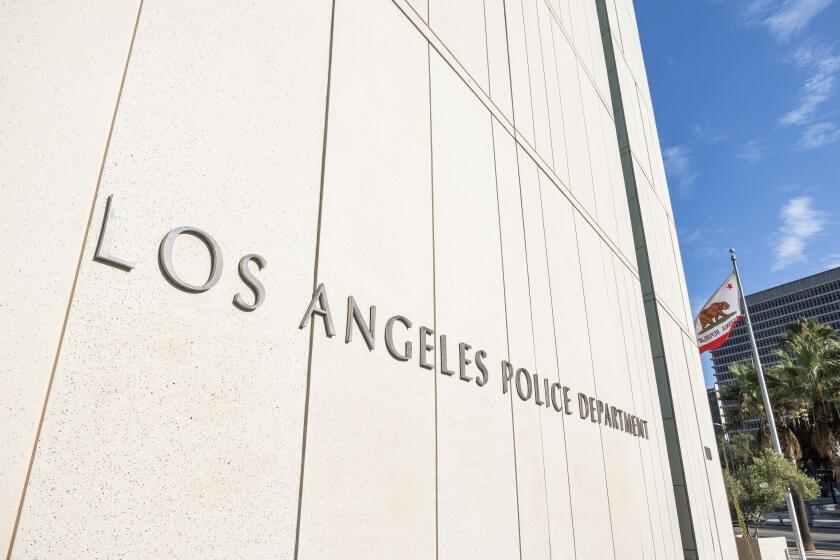Showdown Nears Over Sewage Plan : Government: City Council acts to cut cost of court-mandated treatment plant. Result may be a collision with federal edicts.
- Share via
Moving closer to a legal showdown over a federally mandated sewage treatment plan, the San Diego City Council took tentative action Monday aimed at reducing the cost of the $2.5-billion-plus program by more than half.
Although the city’s legal authority to alter the plan remains problematical, the council, reinforcing its stunning decision last week not to proceed with its initial financing, outlined a drastically scaled-back program that represents San Diego’s vision of how it can most efficiently comply with federal clean-water standards.
Based on the city’s own cost projections, Monday’s actions--which would require approval by federal environmental regulators, a U.S. District judge and perhaps even a change in federal law--could lower the controversial program’s price tag to about $1.2 billion. That, in turn, could dramatically reduce the sewer and water price increases needed to help finance the program.
Although council members hailed Monday’s vote as a step toward restoring economic and environmental sense to a program they argue now lacks both, the need for federal concurrence to ratify any council decision leaves the potential savings very much in doubt.
In anticipation of a meeting with Judge Rudi Brewster, city staffers will report back to the council next week on the financial and legal consequences of Monday’s decision.
Even so, Monday’s action, which came over the strong objections of Mayor Maureen O’Connor, provided the clearest evidence to date of the council’s desire--admittedly, perhaps a quixotic one--to renegotiate a consent decree between the city and the U.S. Environmental Protection Agency governing the multibillion-dollar Clean Water Program.
“We are asking for redirection . . . and not trying to wriggle within” the existing agreement with the EPA, said Councilman Bob Filner, who last week persuaded the council not to authorize up to $200 million in bonds to finance the initial phases of the sewage treatment expansion and upgrading program.
The council’s 7-1 vote, which came with O’Connor in opposition and Councilman George Stevens absent, closely followed a proposal developed last week by Councilman Ron Roberts intended to, in his words, create a sewer system “that reflects our city’s actual needs, not a system driven by the grandiose dreams of engineers and consultants.”
During Monday’s at times contentious debate, council members told city administrators what they would like to retain and what they hope to jettison from the current consent decree.
Leading the list of projects that the council would like to see eliminated is so-called secondary treatment at the city’s Point Loma sewage plant, a very costly--and, some marine biologists argue, environmentally unnecessary--part of the program.
The current “advanced primary” treatment methods now used on the 180 million gallons of sewage processed there daily before being discharged into the ocean several miles offshore, pose no significant environmental risks, city officials contend.
The EPA’s insistence that San Diego proceed with secondary treatment, Roberts noted, is a structural and financial linchpin in the overall sewage treatment program. Elimination of that component, city officials agree, could produce a much simpler, less expensive sewage system.
“If we go to secondary at Point Loma, it creates a need for all kinds of plants,” Roberts said. “If we don’t, we don’t need those plants.”
O’Connor, however, argued that San Diego should proceed with secondary treatment, which she contends offers environmental advantages. The mayor also repeated her oft-heard lament that federal aid to help pay for a major percentage of overall program has not yet been committed.
“We’re the only (major) city in the country that’s not at secondary,” O’Connor said. “I don’t think it’s wrong to go to secondary. What I think is wrong is the federal government is not helping us out like it did other cities.”
Beyond the elimination of Point Loma’s proposed secondary treatment capacity, the motion approved Monday also indicated the council’s preference for a sewage treatment system built around several other guiding tenets, including:
* Continued upgradings of the current system, including extension of the Point Loma outfall pipe and construction of a parallel pipeline to provide a back-up to the existing pipe, which ruptured early this year.
* Construction of water-reclamation plants and other facilities on a timetable linked to projected growth in the city’s sewage capacity and as markets for reclaimed water become available.
* Requiring new development to pay a “fair share” of the cost of system expansions necessitated by growth.
Although restructuring of the consent decree along those lines remains a formidable challenge, some council members were heartened Monday by a letter from the Regional Water Quality Control Board indicating general support for the city’s position.
Detailed to the council in closed session, the letter could strengthen the city’s position when it approaches Brewster and the EPA seeking changes in the consent decree, council members said.
More to Read
Sign up for Essential California
The most important California stories and recommendations in your inbox every morning.
You may occasionally receive promotional content from the Los Angeles Times.













